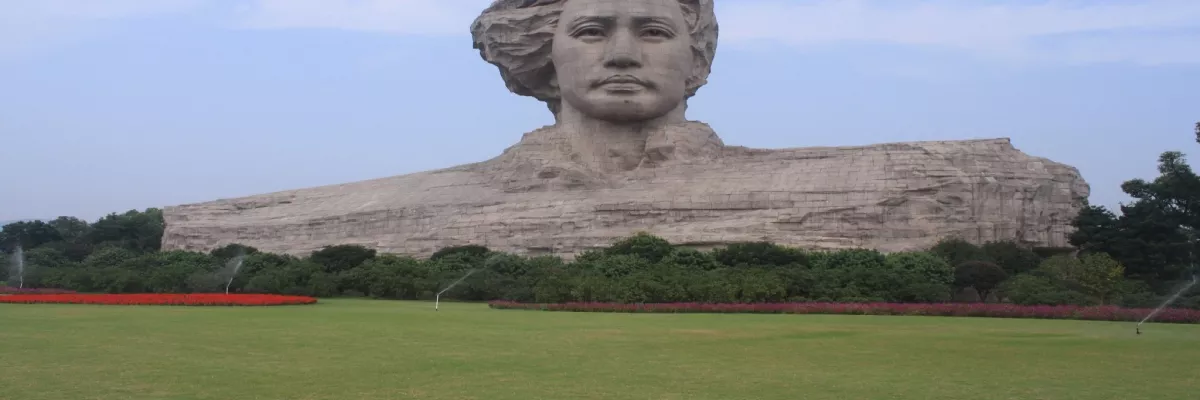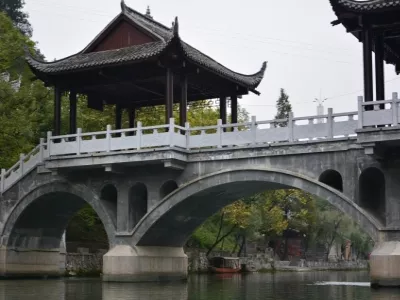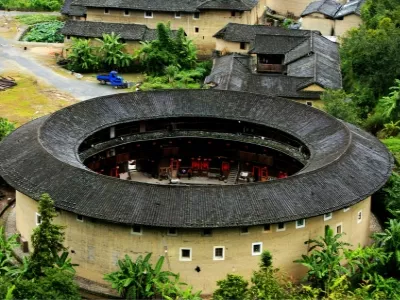Changsha, capital of Hunan Province, is a scenic, temperate city named a Historical and Cultural Famous City and one of China's first Tourist Cities open to the outside world.
It is home to misty, flower-adorned Yuelu Mountain and the verdant waters of Xiang River winding through town. Changsha also boasts the 8th wonder of the world, Mawangdui Han Tombs, historic Yuelu Academy and Eastern Wu Kingdom Bamboo Slips.
Throughout history, Changsha has nurtured many renowned politicians, military strategists and literary masters. The 2,000 year old city was a Chu State stronghold during the Spring and Autumn Period.
Today, Changsha is a cosmopolitan hub of pop culture and cuisine. Hunan TV and talent shows captivate the nation, while tantalizing street snacks abound. Whether you seek history, youthful energy, or delicious flavors, Changsha has it all.
Xiang River, spanning 75km, is Changsha's lifeline, dividing the city into east and west banks.
The west hosts cultural institutions like Yuelu Mountain, Yuelu Academy, research facilities and universities. The east contains commercial districts, bar streets and hotels.
Tianxin District is the birthplace of Changsha's Chu-Han culture. Historic sites, pedestrian shopping streets, bar streets and folk cuisine streets converge here.
In summary, Changsha boasts natural scenery, ancient heritage, academic influence and modern entertainment. It provides a multidimensional experience of China's past and present.
Consumption level
Outside of major holidays and peak seasons, two people can comfortably tour Changsha for 2 days on about 400RMB total. The main costs will be transportation and lodging.
Opt for express hotels located near top attractions like Orange Isle and Chibi Historical Park, which offer rates around 100-150RMB per night. Use metro cards and public buses to get around the city for just 2-3RMB per ride. Eat affordable local fare like liangfen, Mao's braised pork, and stinky tofu from street stalls and small restaurants. Focus spending on just a couple highlights each day.
By choosing budget lodging, getting around via public transit, and sampling cheap local specialties, travelers can experience Changsha's main cultural sites, natural scenery, and distinctive cuisine on a tight budget of around 200RMB per person per day. Advance planning and budget-savvy choices are key for an affordable trip.
June 6th
The 6th Day of the 6th Month in Changsha, China
The traditional festival on the 6th day of the 6th month in Changsha has various folk names like "Guan Shengren's Birthday" or "Displaying Genealogies Festival." It centers around warding off evil spirits and disasters.
According to legend, Guan Shengren is a deity associated with calamities. On his birthday, many rituals are held to appease him. Farmers adorn fields with paper effigies and rooster blood to honor the Land God. Some sacrifice roosters at dawn, beseeching protection.
Literati air out books and paintings, while women spread out fine clothes and linens. Temples and ancestral halls display scriptures, genealogies and statues in the open air. The airing purifies items and repels misfortune. As the old saying goes, "On the 6th day of the 6th month, people air clothes while dragons air robes."
Marked by vivid symbolic actions, the 6th day of the 6th month epitomizes Changsha's rich folk culture and customs tied to venerating deities and seeking blessing. The time-honored traditions persist as a community expression of identity.
Location: Changsha, Hunan, China
Time: 6th day of the 6th lunar month
Dragon Boat Festival
Dragon Boat Festival in Changsha, China
The Dragon Boat Festival is a major folk event in Changsha on par with the Spring Festival and Mid-Autumn Festival. On the 5th day of the 5th lunar month, locals hold exciting dragon boat races to commemorate the traditional scholar Qu Yuan.
Spectators flock from miles around to vantage points along the Xiang River, Liuyang River and Laodao River. After lunch, the carved dragon heads are mounted and the intense competitions commence. To the beat of drums, oarsmen propel the boats furiously forward, cheered on by thundering crowds. The spirited contests last into the evening, sometimes continuing the next day. They conclude with rituals to send off the dragon king.
The tradition originates from a belief that dragon boat racing dispels ill fortune, as the 5th lunar month was seen as plagued by evil. In some areas like Liuyang, preparations start a month earlier with villagers practicing enthusiastically to stirring war drums.
Marked by passionate community participation, the Dragon Boat Festival affirms Changsha's cultural heritage and identity. The time-honored tradition transforms the rivers into vibrant centers of activity and collective spirit.
Location: Xiang River, Liuyang River, Laodao River, Changsha
Time: 5th day of 5th lunar month
Searching for free outdoor shooting of classical wedding photos
Rising like an ancient palace, the iconic arches of Changsha's Yushan Textile Mill capture photographers' imaginations. Though no longer operational, the deserted factory's towering Romanesque gatehouse and connecting two-story buildings provide a majestic industrial backdrop. With minimal foot traffic, you're free to explore the grounds and capture the interplay between decaying grandeur and natural overgrowth. As sunset bathes aging bricks in a nostalgic glow, visions of regal weddings and fairy-tale moments come to life. Have your own Cinderella experience posing on the wide front steps or amidst vine-strewn halls. Nearby alleys reveal traditional Changsha residences for added variety. Yushan's photogenic blend of faded glory, classic architecture, and seclusion make it a fairy-tale setting for romantic wedding photoshoots or a quirky urban adventure.
Taste the hot and greasy sugar and oil cake
The folk song "Moon Cakes" immortalizes Changsha's signature sweet tangyuan, singing "the moon cakes of Changsha are so delicious." For the ultimate tangyuan experience, head straight to Li Gong Temple's famed stall. Unlike the usual maxim, impatience is a virtue when eating these piping hot rice balls. Allowing them to cool even briefly robs them of their soft, stretchy texture and sweet aroma. As vendors shave balls of sticky rice into simmering syrup, be ready to taste them fresh from the pot. Bite into the scalding, gooey exterior to unveil a rich sesame or red bean paste filling. With wrappers melting on your tongue and syrup dripping down your fingers, savor Changsha's beloved soul food. Just like the moon cakes in the song, these tangyuan disappear quickly between happy mouths.
Enjoy a leisurely life in Changsha's backyard
After the day-tripping crowds depart Jinggang Ancient Town, immerse yourself in the tranquil riverside lifestyle. Spend a few days in a guesthouse overlooking the water, taking in gorgeous sunsets through your window. Hop on a ferry to nearby Tongguan to glimpse artisans at work—watching carpenters and scale-makers ply traditional trades. Chat with locals selling just-fried snacks hot off the griddle, like savory scallion pancakes. Purchase the catch of the day straight from fishermen's baskets before returning home to cook up a feast. Meander down twisting lanes that open into breathtaking river panoramas. Let go of city stresses as you blend into the unhurried pace of life in Changsha's scenic backyard. Jinggang offers a portal to simpler times in a picturesque setting, perfect for recharging through leisurely inactivity beside glistening waters.
Best Travel Time
Autumn is the best travel time in Changsha, where you can enjoy the independent cold autumn, the orange island head north of the Xiangjiang River, and the Yuelu Mountain where the frost leaves are redder than the flowers in February. Changsha is suitable for tourism in all three seasons except for high temperatures in midsummer. Spring in Changsha begins in mid February, when the climate is changing and tourists need to prepare more clothes to prevent catching a cold. In late November, it enters winter, with an average temperature of around 5 ℃ and sometimes it snows. At this time, you can go to the mountains to watch the ice cream.Dressing Guidelines
Changsha's unpredictable spring and fall weather requires versatile layers. Pack coats, wool jackets, sweaters, and hoodies to stay warm while carrying an umbrella in case of rain. Changsha's scorching summers average 23-30°C - choose breathable cotton shirts, dresses, and tees while taking extra sun precautions. Winters average 5-12°C, demanding coats, sweaters and insulation against the chill.
Check forecasts and dress accordingly as conditions fluctuate. With the proper attire, Changsha promises comfortable exploration year-round. Don't let weather limit your adventures – come prepared with layers to fully experience Changsha's charms no matter the season! Proper planning ensures you can enjoy Changsha's sights rain or shine, winter or summer.
History
Archaeological evidence confirms human activity in Lianyungang's ancient Mount Qushan and present-day Mount Jinping area as early as 10,000 years ago. In 1959 and 1978, the oldest Paleolithic sites in southeast China were discovered at Erjian and Daxian Village with clear stratigraphic layers. Mount Jinping has 19 Neolithic sites, with Erjian being one of China's earliest farming areas.
The 20-meter long, 10-meter wide "General Cliff Painting" discovered in 1979 was appraised by the State Administration of Cultural Heritage as "an extremely important cultural relic and rare major discovery, the earliest 'book' in China."
The Donghan era art treasure "Kongwang Mountain Grottoes Statues" are the earliest Buddhist grotto statues in China, 100-200 years earlier than the Dunhuang Grottoes, and protected at the national level.
The area is also steeped in history, with attractions related to Confucius' sea gazing, Emperor Qin's inspections, and famous poets and officials like Tao Yuanming, Li Bai, Su Dongpo, Shen Kuo, Li Qingzhao, Wu Cheng'en, Li Ruzhen, Wu Jingzi, Lin Zexu, Zhu Ziqing and more.
Ships
Changsha enjoys convenient water transportation along the rivers to the sea. Ships can sail upstream to Chongqing, midstream to Wuhan, and downstream to Shanghai along the Yangtze River. Changsha also has regular ferry routes to ports along the Yangtze River and cities like Nanjing, Shanghai, and Lianyungang.
Changsha's sole passenger ferry terminal has daily departures to Yiyang, Anxiang, Changde, Xiangtan, Xiangyin, Yueyang and other destinations. With numerous rivers and lakes, taking a ferry boat allows travelers to admire the scenery in a relaxed way.
However, boats are not the fastest mode of transport. If your time is limited or you want to cover long distances, consider buses, trains or flights instead. Ferries remain a nice option for short trips within the Changsha area or leisurely multi-day Yangtze cruises with sightseeing stops along the way. Check ferry schedules in advance as some routes only run on certain days.













